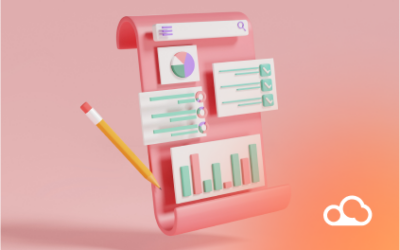
CDO Mind Map: Understanding business goals & objectives
Welcome to Mind Map: A DataGalaxy blog series where we’ll deep dive into creating an effective, secure, and high-quality data governance framework for data experts, project coordinators, and data decision-makers.
In this step-by-step blog series, we’ll discuss the key pieces needed to build an effective data governance framework – Whether you’re just getting started or looking to update your current plan. This is step one: Understanding business goals and objectives. Follow along with DataGalaxy to discover the entire Mind Map reoccurring blog series!
Understanding business goals & objectives: A step-by-step guide
The first step for creating a proper business data governance framework is to understand your current goals and objectives. This step is crucial for effectively leveraging data and analytics to drive business success.
The following are some suggested steps a CDO, CDAO, data professional, or data decision-maker can take to achieve the goal of understanding overall business goals and objectives.
1. Engage with business stakeholders
Establishing strong communication and collaboration channels with key business stakeholders, such as C-level executives, department heads, and business unit managers can help create a data governance framework and ensure data management aligns with the needs and objectives of the organization.
It also helps in enhancing data quality, compliance, and user adoption while reducing data-related risks and conflicts. This collaborative approach can help strengthen the organization’s overall data governance efforts.
2. Align data strategy with business strategy
Aligning data strategy with business strategy ensures that data is not treated as a separate, isolated function but as a valuable asset that is integral to the organization’s success. It helps in setting priorities, resource allocation, and leveraging data to make informed decisions and gain a competitive edge.
It’s important to ensure that the overall organizational data strategy aligns with the business strategy by identifying the specific data needs and requirements to achieve the business objectives. Data leaders should work with business stakeholders to identify data-driven opportunities and create data-driven solutions that support their goals.
3. Identify Key Performance Indicators (KPIs)
Identifying KPIs in the context of a data governance framework is crucial for measuring, improving, and aligning data governance efforts with business goals. KPIs help ensure accountability, prioritize actions, and provide a clear path for continuous improvement in data management practices. It’s important for data leaders to work closely with business stakeholders to identify and define the KPIs that directly relate to the organization’s goals.
4. Conduct a data needs assessment
Conducting a data needs assessment is important for creating an effective data governance framework because it ensures that data governance efforts are aligned with the organization’s needs and that resources are allocated strategically to support data quality, security, and compliance.
Data decision-makers can conduct a thorough assessment of the data requirements for each business unit or department to help them understand the data they currently use, data gaps, and data quality issues.
5. Data governance & compliance
Ensure that data governance policies and practices are in place to protect data integrity, security, and privacy. Data integrity, security, and privacy are paramount in the creation of a data governance framework, as they are not only critical for compliance but also for maintaining data quality, protecting against risks, and ensuring that data is a trusted asset for decision-making and business success.
6. Data analytics & insights
Leveraging data analytics and business intelligence tools to extract meaningful insights from data can help data leaders present insights in a way that aligns with business goals and is easily understandable for non-technical stakeholders. These tools also provide the necessary insights, monitoring capabilities, and decision-support functions that are crucial for maintaining data quality, security, and alignment with business goals.
7. Business case development
Creating a business case helps business stakeholders understand the potential benefits of data initiatives, secures stakeholder support and resources, and outlines the benefits, risks, and objectives of data governance.
8. Measure & monitor progress
Measuring and monitoring progress ensures alignment with business objectives, accountability, and the ongoing improvement of data governance practices, making data management more efficient and responsive to the organization’s evolving needs. It’s important to continuously measure the impact of data initiatives on the business objectives and to regularly report progress to business stakeholders, highlighting successes and areas for improvement.
9. Promote a data-driven culture
Fostering a data-driven culture within the organization helps encourage and support business stakeholders in using data and analytics to make informed decisions. Additionally, promoting a data-driven culture helps an organization better understand, align with, and achieve its business goals and objectives because it enables informed decision-making, accountability, transparency, and a proactive approach to business strategy, contributing to the organization’s overall success.
10. Stay updated on industry trends
Staying ahead of the latest industry trends, technological advancements, and best practices related to data management and analytics is vital for a CDO to understand business goals and objectives. It equips the CDO with the knowledge and insights necessary to make informed decisions, develop strategies, and adapt to a dynamic business environment, ultimately supporting the achievement of the organization’s goals.
11. Be an evangelist & walk the talk
Data evangelists are passionate advocates for using data and analytics to make informed decisions: They work to convince stakeholders, colleagues, and leaders of the value and importance of incorporating data into various aspects of the organization’s operations.
Conclusion
By following these steps, data professionals can better understand the organization’s business goals and objectives. Data professionals should make it a priority to understand the overall business goals and objectives when creating a data governance framework to ensure that data governance efforts are not only effective but also fully support the organization’s strategic direction and its pursuit of success.
Interested in learning more? Follow along with our step-by-step blog series about building an effective data governance framework!
Learn even more about using your data as an asset to achieve higher levels of data governance and data quality. Book a demo today to get started on your organization’s journey to complete data lifecycle management with DataGalaxy!




